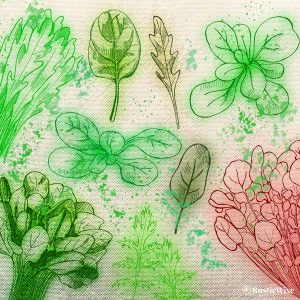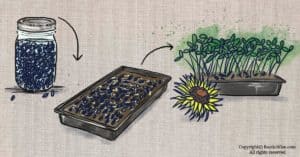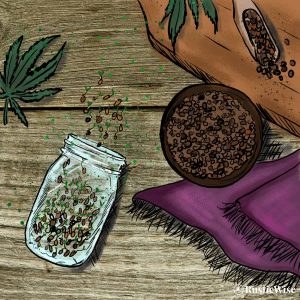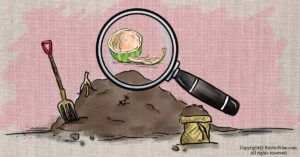How Much Microgreens To Eat Per Day?
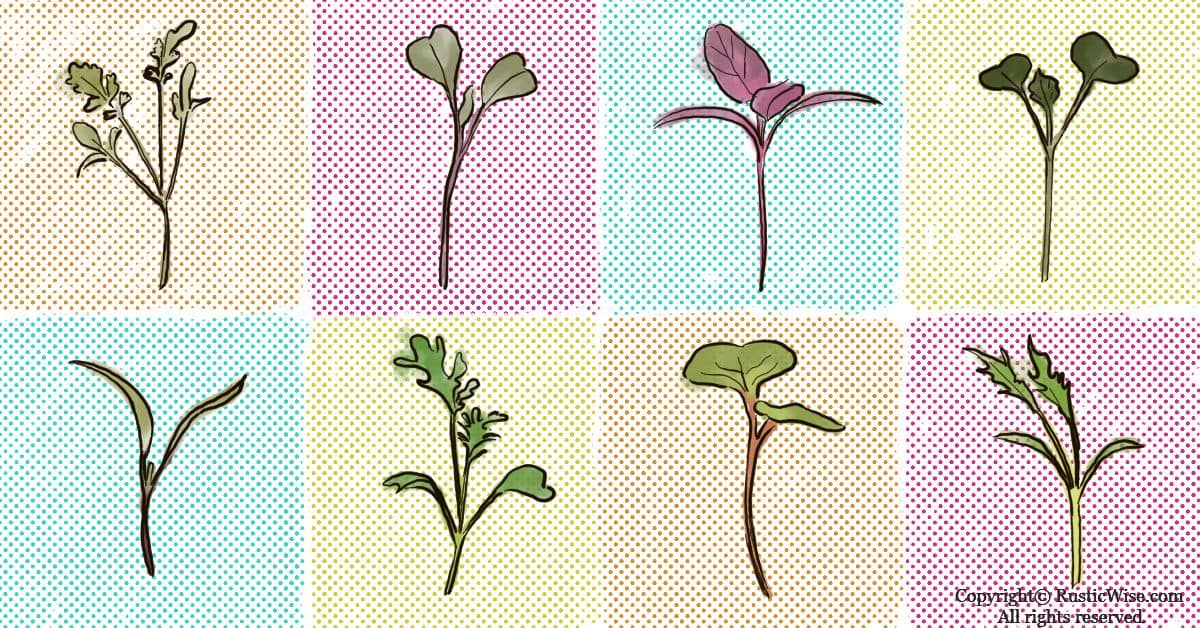
How much microgreens to eat per day? This is a question many people ask themselves, especially after hearing all the benefits of eating more vegetables. The average person needs about 4–5 servings of fruits and vegetables per day. Are you getting enough? Microgreens are a great way to get your veggies in!
While there is no perfect answer to this question, we’ll take a look at the health benefits of microgreens and how you can incorporate them into your daily diet. As of now, there isn’t much scientific literature on the nutritional contents of microgreens. But we’ll do our best to look into what would be a reasonable amount of microgreens to consume in a day. We’ll also examine if there is such a thing as too many vegetables.
I wish there was a quick and easy answer to the question, how much microgreens to eat per day, but there really isn’t. The question is complex. Let’s take a closer look.
Health Benefits of Microgreens
Microgreens are different from sprouts or baby greens. While sprouts are eaten in their entirety (seed, root, and shoot), microgreens are trimmed just above the soil line. When harvested, microgreens contain the cotyledons (seed leaves) and sometimes one or two true leaves. Baby greens are actually larger, more mature versions of microgreens.
Microgreens are tiny greens that are harvested when they’re only a couple of inches tall. While different microgreens varieties contain varying levels of nutrients, overall, they provide a good dose of vitamins A, C and K. The greens also contain B-complex groups (B Vitamins) as well as calcium, iron, magnesium potassium and zinc.
Microgreens are a rich source of polyphenols which are natural compounds found in plant-based foods. Polyphenols are powerful antioxidants which help ward off free radicals, and increase your protection against certain conditions such as heart disease, cancer, and type 2 diabetes. Polyphenols also play a role in healthy digestion.¹
Microgreens are garnering attention in the health world as they are said to contain more nutrients than the same leaves of mature plants. How much more? Up to five times the amount of vitamins and carotenoids, according to a study by the University of Maryland and the Agricultural Research Service (ARS) from the U.S. Department of Agriculture (USDA).²
If you’re tired of regular vegetables, growing microgreens at home is easy and a great way to add variety to your diet. Not only will you benefit from the higher nutrient levels, you’ll also have access to fresh greens year-round!

Credit: Augustine Fou / Unsplash
Can you eat too many vegetables?
Carotenemia
Ever hear about the kid that ate too many carrots and turned orange? This isn’t an urban legend, it’s a real thing. There are some fruits and vegetables that have high levels of beta-carotene, and eating too many can cause carotenemia which is a change in skin pigmentation due to excess intake of foods containing the pigment beta-carotene.
You can alleviate carotenemia by cutting back on carrot consumption; otherwise, there are no serious dangers with this condition.
Carrots aren’t the only foods with beta-carotene. Other foods rich in beta-carotene are apricots, mangoes, sweet potatoes, pumpkin, and yams.
According to the Cleveland Health Clinic, developing carotenemia is fairly rare—they only see one or two cases a year. You would need to eat about 10 (whole) carrots a day to develop it.³ And even then, carotenemia isn’t dangerous. Simply cut back on the amount of foods rich in beta-carotene and your skin color should return to normal in several weeks.
Carrots aren’t the only vegetable that you can get too much of.
Cruciferous vegetables (thiocyanates)
Cruciferous vegetables such as broccoli, cabbage and cauliflower contain a compound called thiocyanates. While eating a diet rich in cruciferous veggies is generally a good thing, thiocyanates can be harmful at high levels.⁴
This is because thiocyanates inhibit the absorption of iodine. This may lead to hypothyroidism (a condition in which your thyroid gland doesn’t produce enough hormones).
This is not to say that you should avoid cruciferous vegetables altogether. Rather, try to limit the amount of cruciferous veggies you eat in a day, especially if you have thyroid problems.
Tip: Be careful of consuming too many cruciferous microgreens (or vegetables) if you have thyroid issues. Broccoli microgreens are a popular variety both for its taste and nutritional content. Just be aware of thiocyanates and always consult with your doctor if you have any concerns.
Can you consume too many vitamins in a day?
Yes, you can consume too many vitamins in a day, especially if you’re taking supplements. Some vitamins like vitamin A are actually commonly over-consumed.
For example, according to Harvard Health, “Many people get too much preformed vitamin A from food and supplements. Large amounts of supplemental vitamin A (but not beta carotene) can be harmful to bones.”⁵
Other vitamins, people don’t get enough of. Many people are found to be lacking the following nutrients:
- Vitamin D (the sunshine vitamin)
- Vitamin B12
- Iron
- Zinc
Tip: Vegetarians or vegans are more prone to be lacking in protein, zinc, and iron due to their plant-based diet. Many microgreens are good sources of these nutrients.
So how much vitamins and minerals are we supposed to consume each day? It depends on your gender and age. It’s also important to note that some minerals like magnesium and potassium have upper limits that apply to supplements and not necessarily amounts you would get from foods.
Some supplements report vitamin A in international units (IU’s).
| Recommended Amount (daily RDA* or daily AI**) | Upper Limit (UL) per day | |
|---|---|---|
| Vitamin A (retinoids and carotene) | Men: 900 mcg (3,000 IU) Women: 700 mcg (2,333 IU) | 3,000 mcg (about 10,000 IU) |
| Vitamin C (Ascorbic Acid) | M: 90 mg W: 75 mg Smokers: Add 35 mg | 2,000 mg |
| Vitamin D | 31–70: 15 mcg (600 IU) 71+: 20 mcg (800 IU) | 50 mcg (2,000 IU) |
| Vitamin E | M: 15 mg W: 15 mg (15 mg equals about 22 IU from natural sources of vitamin E and 33 IU from synthetic vitamin E) | 1,000 mg (nearly 1,500 IU natural vitamin E; 2,200 IU synthetic) |
| Folic Acid/Folate | M: 400 mcg W: 400 mcg | 1,000 mcg |
| Vitamin K | M: 120 mcg W: 90 mcg | Not known |
| Calcium | 31–50: M: 1,000 mg W: 1,000 mg 51-70: M: 1,000 mg W: 1,200 mg 71+: M: 1,200 mg W: 1,200 mg | 2,500 mg |
| Iron | 19–50: M: 8 mg W: 18 mg 51+: M: 8 mg W: 8 mg | 45 mg |
| Zinc | M: 11 mg W: 8 mg | 40 mg |
| Potassium | M: 4.7 g W: 4.7 g | Not known (Food sources do not cause toxicity, but high-dose supplements might.) |
| Magnesium | 18+: M: 420 mg W: 320 mg | 350 mg (Note: This upper limit applies to supplements and medicines, such as laxatives, not to dietary magnesium.) |
Source: Listing of vitamins, Harvard Health
For more a more detailed look, check out this handy table that outlines Dietary Reference Intakes (DRIs): Tolerable Upper Intake Levels, Vitamins.
What happens when you eat too much of something? The natural response is that your body will try to expel excess levels, or flush out the toxins from eating too many things at once.
How many servings of vegetables to eat a day?
Most of us are not getting enough servings of fruits and vegetables a day so it’s important to consume as many vegetables and microgreens as you can. According to the Centers for Disease Control and Prevention (CDC), just one in ten adults get enough servings of fruits and vegetables a day.⁶
With this said, most of us should be looking to add more greens (and microgreens) to our daily diets.
So how much fruits and veggies should adults be eating a day? The CDC recommends the following guidelines:
- At least 1½– 2 cups per day of fruit
- 2–3 cups per day of vegetables
The American Heart Association recommends more: 4 servings of fruits and 5 servings of vegetables:
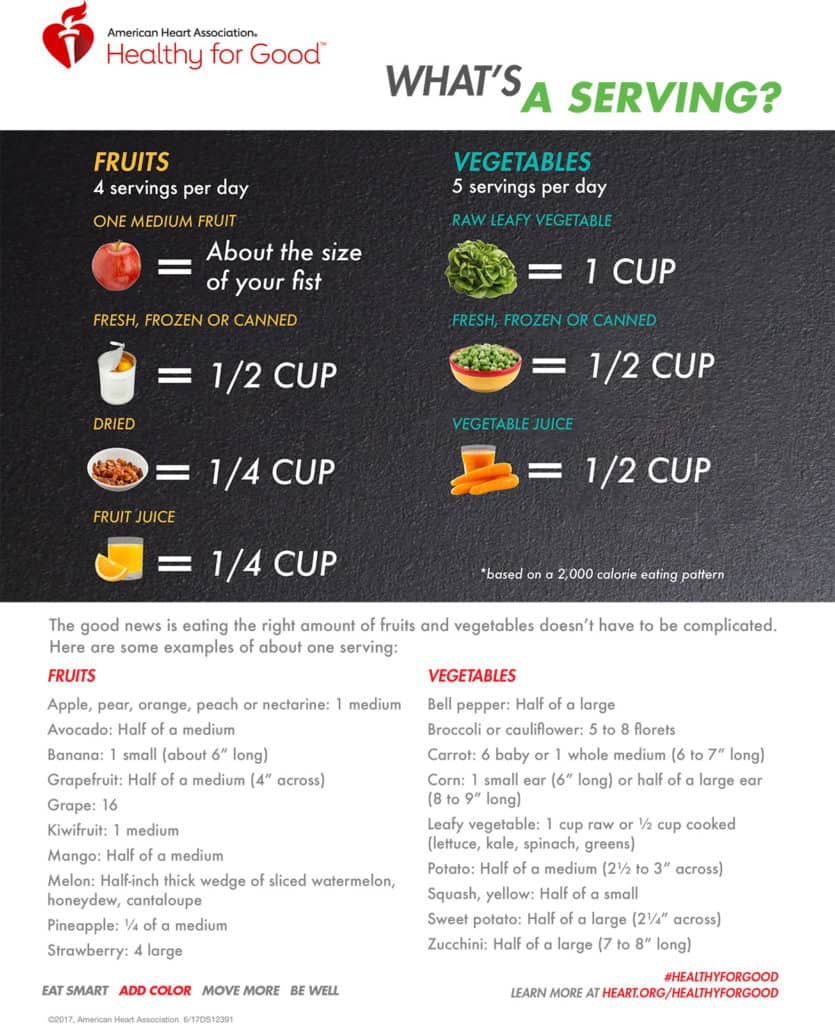
To get a better idea of how much vegetables to eat, here are some general guidelines:
- Eat at least five servings of vegetables per day
- Consider eating more than five servings if you’re a physically active person.
- Aim for four to six different types of produce, including dark leafy greens and other deep colors like reds or purples.
Healthiest microgreens to eat
All microgreens have different nutritional content depending on the variety.
The University of Maryland along with the Agricultural Research Service (ARS) from the U.S. Department of Agriculture (USDA) performed a study comparing 25 varieties of microgreens and found that the following microgreens had the highest levels of vitamin C, carotenoids, vitamin K, and vitamin E:
- Red cabbage
- Cilantro
- Garnet amaranth
- Green daikon radish
Surprisingly, one of the most popular microgreens—broccoli microgreens—were not part of this study.
Broccoli microgreens are rich in vitamins A, C, K, and folic acid.
As we mentioned earlier, there’s not a huge amount of nutritional information out there on specific microgreens. However, we did find some information on a sunflower and radish microgreens mix.
Here’s the nutritional breakdown for 100 grams (roughly 1/2 cup) of sunflower and radish microgreens:
- 33 calories, of which protein consists of 24% from Protein (2.2g); 27% from Fat (1.1g); and 49% from Carbs (4.4g).
| Sunflower and radish microgreens mix (100 grams) | |
| Calories | 33 |
| Protein | 2.2 grams |
| Fat | 1.1 grams |
| Carbs | 4.4 grams |
| Fiber | 2.2 grams |
| Iron | 88% of the Daily Value |
| Vitamin K | 66% of the DV |
| Vitamin A | 18% of the DV |
| Folate | 17% of the DV |
| Magnesium | 16% of the DV |
| Riboflavin (B2) | 12% of the DV |
| Vitamin B6 | 10% of the DV |
| Vitamin C | 7% of the DV |
| Calcium | 7% of the DV |
| Potassium | 6% of the DV |
| Zinc | 6% of the DV |
| Phosphorous | 5% of the DV |
Note: As you can see, this microgreen mix of sunflower and radish contains exceptionally high levels of iron and vitamin K in a 100 grams serving. If you eat a lot of this mix, it’s reasonable to assume you could get more than what you need in a day. Whether or not this is harmful to your health is another matter—one that I’ll leave up to the doctors to recommend!
Get to know your microgreens
Not all microgreens are the same, nor do they contain the same nutritional content. It’s best to read up on each microgreen separately. Many online seed suppliers provide a bit of nutritional content. You can also look up the nutritional content of the specific vegetable, herb, grain, or legume to get a rough idea of the types of nutrients you’ll be consuming.
How you can get too much of a good thing
An easy way to go over your daily recommended dietary allowance (RDA) is to go overboard with smoothies, or juices.
It’s easy to lose track of how many fruits and vegetables go into one smoothie or juice. It’s all gulped down in one shot. While vegetables/microgreens and fruits are healthy, you can get too much of a good thing, if you’re say, chugging down multiple smoothies a day.
Are we saying that you shouldn’t make smoothies, or juices? Absolutely not! Consuming your microgreens, fruits and veggies in liquid form is a great way to ensure you’re getting the daily recommended dietary allowance. Many people prefer to drink or juice their fruits and veggies because it’s easier, faster, and more portable for those on-the-go.
Just be mindful of how much you’re consuming in a day.
So be sure to measure the portions of juice or smoothies when juicing or blending your favorite fruit combinations for breakfast or post-workout fuel. And be mindful of the types of fruits and vegetables you’re eating throughout the day.
Final thoughts on how much microgreens to eat per day
Please note that I’m not a doctor or nutritionist. I’m just approaching this from a layperson’s perspective. If you have any health issues, please consult with your doctor. We’re not trying to sell you any microgreens. But we do enjoy eating and growing them at home (as well as sprouts!).
It’s true that many of us don’t get enough fruits and vegetables a day. Microgreens are a great way to add more healthy greens to our diet. While it is possible to overdo it with some foods, it’s highly unlikely you need to worry about “overdoing it” with microgreens. If you use microgreens like most people do, and add them as a garnish, or as a part of a healthy shake, you likely won’t overdo it.
If you eat in moderation, microgreens are a great addition to a healthy diet. The best way to know how many microgreens you should eat per day is by starting small, and increasing your intake gradually.
When it comes to a well-rounded diet, the key is variety. This applies to fruits, vegetables, and microgreens. There are so many tasty varieties of microgreens to try, each with their own unique flavor profile and nutritional content. What are you waiting for?
How much microgreens should you eat per day to get all of your daily vitamin intake? There is no hard and fast rule, but it’s best to try not to go over your RDA.
👉If you like this post, see our Complete Guide to Growing Microgreens at Home.
Would you like more timeless tips via email?
Fun tips to help you live an independent, self-sustaining lifestyle. Opt-out at any time.


References:
- Petre, Alina (08 July 2019). “What Are Polyphenols? Types, Benefits, and Food Sources,” Healthline. Accessed April 2021.
- Lester, Gene & Xiao, Zhenlei & Luo, Yaguang & Wang, Qin. (2013). Microgreens: Assessment of Nutrient Concentrations. Journal of Agricultural and Food Chemistry. Accessed April 2021.
- Cleveland Health Clinic, Can Eating Too Many Carrots Turn Your Skin Orange? https://health.clevelandclinic.org/can-eating-too-many-carrots-turn-your-skin-orange/. Accessed April 2021.
- Bjarnadottir, Adda (04 June 2017), “8 Health Foods That Are Harmful If You Eat Too Much,” Healthline. Accessed April 2021.
- Harvard Health, Listing of vitamins, https://www.health.harvard.edu/staying-healthy/listing_of_vitamins. Accessed April 2021.
- Centers for Disease Control and Prevention (CDC), “Only 1 in 10 Adults Get Enough Fruits or Vegetables,” https://www.cdc.gov/nccdphp/dnpao/division-information/media-tools/adults-fruits-vegetables.html. Accessed Novmeber 2023.

Author: Theresa Tesolin
Theresa is co-founder of RusticWise. She helps people unleash their inner DIY spirit by encouraging them to get dirty and make or grow something from scratch.


